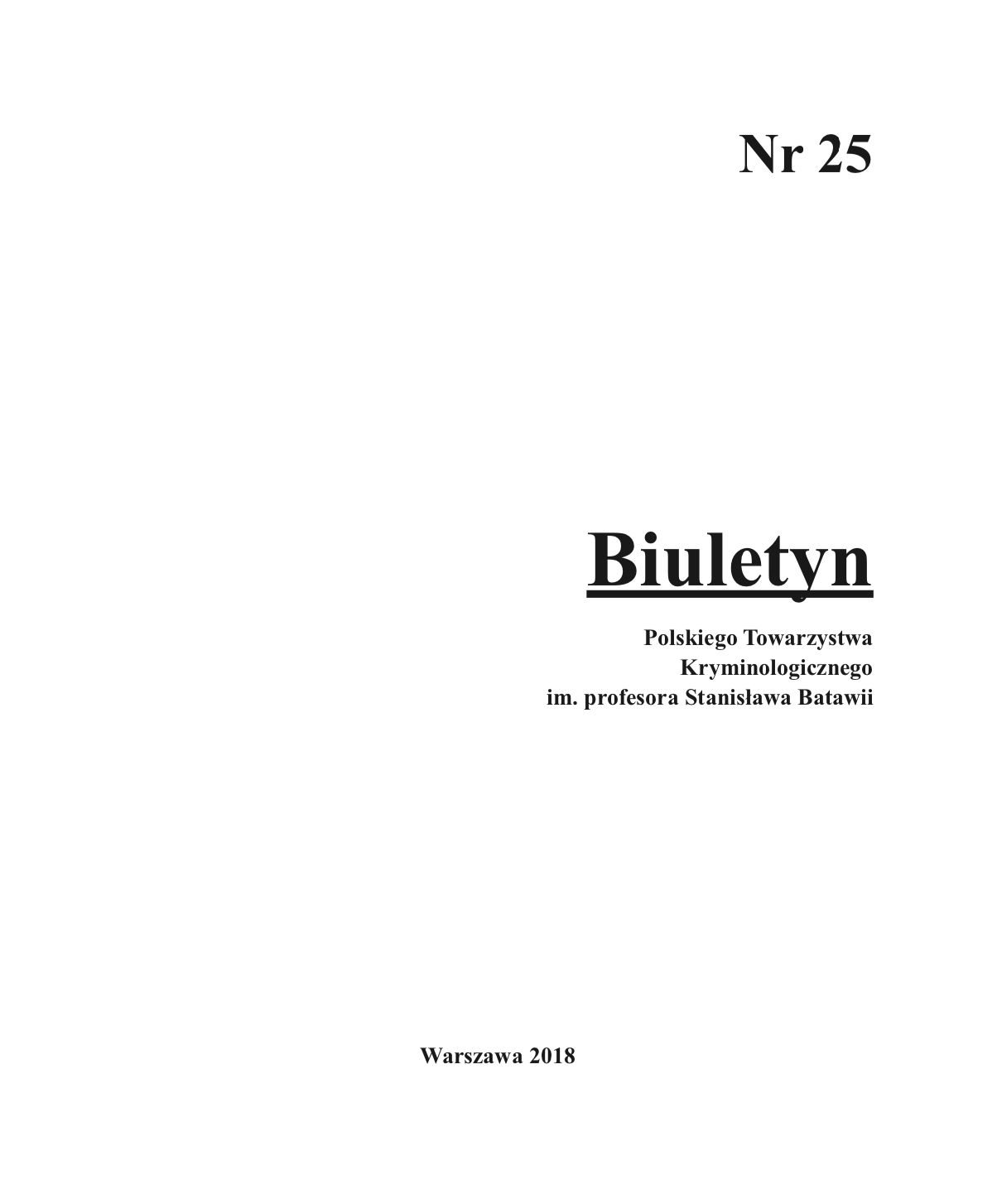Psychospołeczne czynniki ryzyka zachowań niezgodnych z prawem młodzieży
Psychosocial risk factors for youth crime
Author(s): Anna Więcek-DurańskaSubject(s): Law, Constitution, Jurisprudence, Criminal Law
Published by: Polskie Towarzystwo Kryminologiczne im. prof. Stanisława Batawii
Keywords: risk factors; self-report survey; youth crime;
Summary/Abstract: Crime is a multidimensional social phenomenon, important for the whole society For years,researchers have been conducting research to increase knowledge about the factors responsible for criminal behavior and to look for such factors that play a positive (protective) role.Depending on the leading research trend, such factors were sought in the individual’s characteristics or in the external environment (family, local environment). Many studies have also been devoted to verifying external signs and genetic deviations indicating predisposition to criminal behavior. Some scientists also point to neurobiological factors, in particular the prevalence of mental disorders in the population. Currently, the trends of research are taken from many fields of science. It is emphasized, however, that every human behavior is determined not only by his personality, but also by the environment in which he is located. The issue of crime is more important when this phenomenon applies to children and young people. The analysis of available statistical data on criminal offenses committed by minors shows that this issue is a significant social problem. In 2015, in court statistics there were over 12 000 criminal offenses committed by juvenile offenders and over 14 000 court judgments on demoralization of minors. Furthermore it stresses that the age of young people committing crimes significantly decreased.The aim of the study was the evaluation of prevalence and analysis of determinants of „risk factors” in the etiology of criminal acts. Risk factors are defined as individual personal properties,environmental characteristics and mutual interactions between them. In the statistical sense,risk factors are properties that coexist with abnormal behavior or precede its formation. Based on knowledge about risk factors, we can try to estimate the occurrence of certain negative phenomena, including for example committing offenses by young people. It should be emphasized that the emergence of risk factors does not necessarily lead to negative consequences, but they increase the risk of their occurrence.The study used a self-report questionnaire, psychological tests and an interview. The obtained empirical material allowed to capture certain characteristics and differences between the youth who admitted committing the crime and those who did not have such experiences.The work consists of two parts. The first is a theoretical justification of the subject matter of research. The second is empirical and includes a description of the method and the results of research and their discussion and interpretation.The survey was conducted on a group of students aged 15-19 years, using three methods (survey research using psychological tests, self-study report and the interview).Thus obtained results allowed to show the current trend of youth crime related to gender and the prevalence of risk behaviors (drinking strong alcohol or drug use). Analyzes were also a number of environmental factors, and on the basis of indicators developed “the goodness of the local environment.” Analyses showed that there were features differentiating the family of the young people. The collected research material allowed to show the differences between the two groups of young people and to isolate psychosocial risk factors which youth crime.
Journal: Biuletyn Polskiego Towarzystwa Kryminologicznego im. prof. Stanisława Batawii
- Issue Year: 2018
- Issue No: 25
- Page Range: 84-138
- Page Count: 55
- Language: Polish

